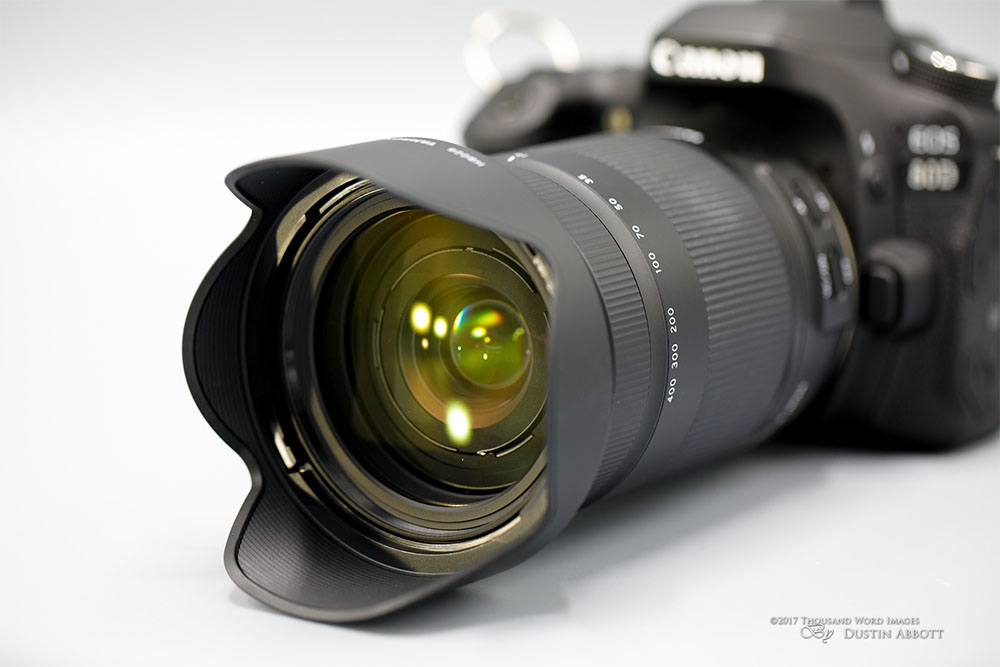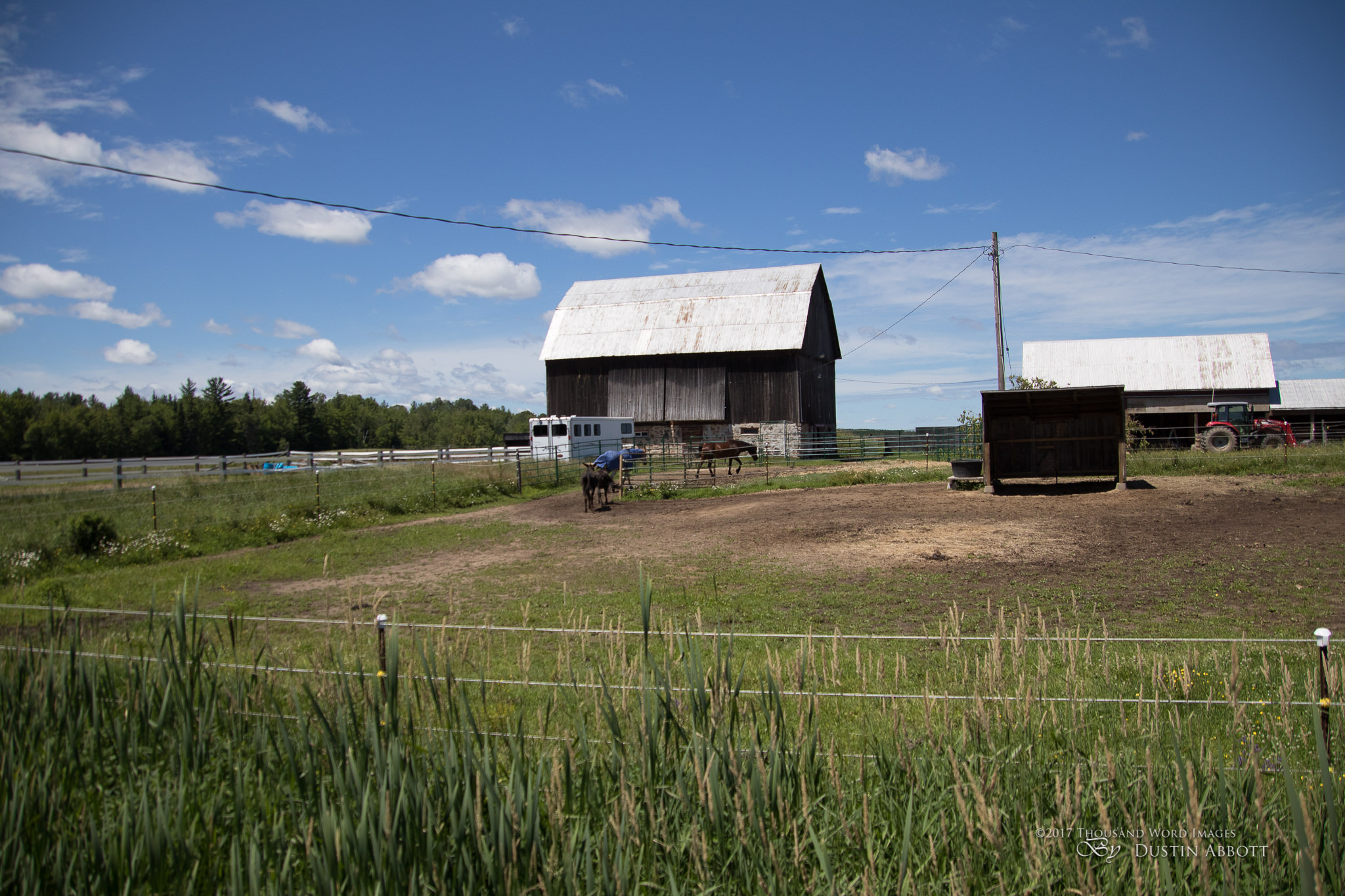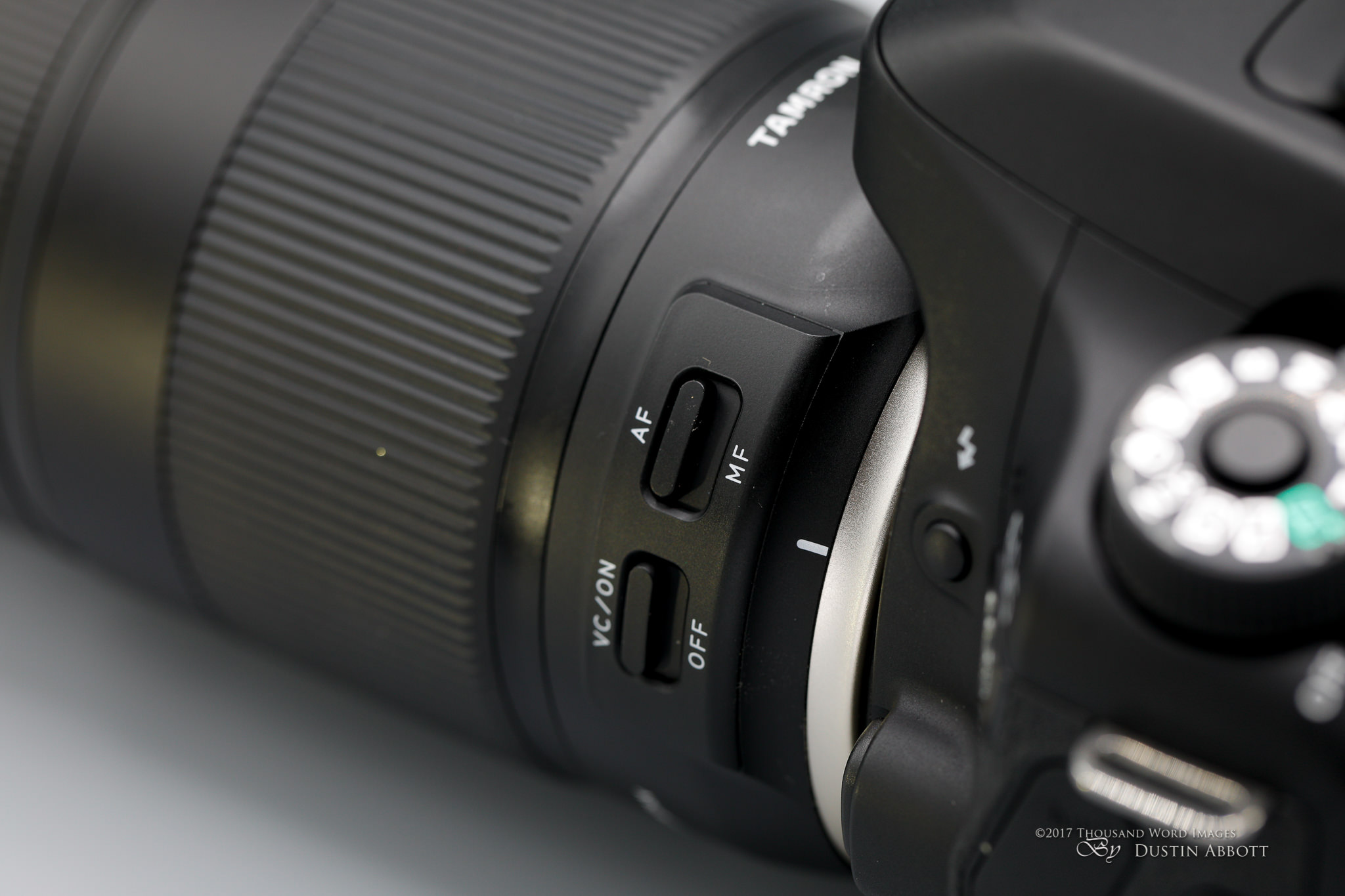One of the primary strengths of interchangeable lens camera systems like DSLRs is that you can, well, change lenses. This allows you to customize the lens to the job at hand and get the best results. But what about the people who don’t really want to change lenses? Those frustrated when they need a telephoto shot but don’t have enough reach or need to capture that wide angle landscape only to realize that they only have a telephoto lens along? Some people want a single lens that can do everything, and no company pushes the envelope of what’s possible in an “all-in-one” zoom like Tamron. Their newest lens, the 18-400mm f/3.5-6.3 Di II VC HLD, stretches the limit of what is a possible from a single lens.
There’s a reason why every lens doesn’t offer a huge zoom range. Engineering such an extreme focal range (over a 22x zoom range!) requires a lot of work to minimize the optical compromises required to make it work. Check out these examples of the extreme differences between a scene framed at 18mm vs 400mm (all taken with this lens).
Fortunately Tamron has had a lot of practice in developing such lenses. I’ve personally used and tested five of Tamron’s “superzoom” lenses in the past, and 18-400mm HLD is in most every way the most ambitious. It is designed for APS-C (crop sensor) DSLRs, so on the long end this is an effective (full frame) focal length of 600mm (Nikon/Sony) or 640mm (Canon). That is a tremendous amount of reach, and yet in my testing the performance at 400mm is not much different than the popular 16-300 VC at 300mm. You’ll note that it is slightly less wide on the wide end compared to the 16-300 (18mm instead), which was undoubtedly the compromise needed to make the additional 100mm on the long work. I suspect that most photographers will appreciate the tradeoff.
The 18-400mm VC HLD is the lightest, most compact lens I’m aware of that reaches 400mm. It weighs in at 710g, which is heavier than the 539g of the 16-300mm VC but much lighter than the new Sigma 100-400mm Contemporary lens (1160g) and about equal to Canon’s new 70-300mm IS II (708g). The Tamron 18-400mm obviously has a larger zoom range than any of these lenses. Likewise, the length of the lens is reasonable at right under 12.5cm, although the lens will extend another 9cm when fully zoomed out. The lens is definitely bigger and heavier than, say, the kit lens that came with your camera, but when you consider that an 18-55mm has a 3x zoom range compared to this lens’ 22x zoom range, you realize that the lens is quite compact for all that is packed into it.
The lens features Tamron’s Vibration Compensation (VC) stabilization system, which allows you much greater success when handholding shots. In my tests, I was able to get about a 50% keep rate at 1/15th of a second shutter speed at 400mm (with a nonmoving target). That’s impressive, and while the VC system wasn’t the absolute smoothest I’ve seen from a Tamron, it was effective. Just remember that VC won’t stop your subject from moving, so if you are trying to track a moving subject you will need to get the shutter speed up!
Also included is moisture resistance construction built into the lens. I find this an important feature for a travel-oriented lens, as you may find that it’s raining on the one day you have at the Eiffel Tower or Taj Mahal…and there’s a lot of mist when you’re on the Maid of the Mist at Niagara Falls!
The 18-400mm has Tamron’s new HLD (High/Low Torque Modulated Drive Motor) which allows for fast, quiet autofocus while also allowing for fairly smooth focus in video applications. It isn’t as quiet as, say, Canon’s STM for video, but it does a good job. Focus was quick and accurate in my testing, though the lens does prefer a good amount of light and will hunt a bit in poor lighting.
Tamron’s current design language is very good. A few years ago they launched their new SP Prime series with beautiful all-metal bodies and a very sleek, sophisticated look. Though their consumer-grade lenses like this one employ engineered plastics rather than metal, the design language has trickled down. Tamron has eschewed the somewhat garish gold rings of the past for a more modern black on black theme with a euphemistically labelled “luminous gold” ring (more of a platinum color) right at the lens mount. It’s a subtle accent piece that works nicely. The 18-400 HLD is an attractive lens and should wear well.
The lens barrel has two rings (zoom and focus rings), and I have a minor criticism connected to each one. The zoom action isn’t the smoothest. It requires a bit more force than what I would like and seemed a bit tighter in the middle of the zoom range. This may have to do with the lens not being “broken in”, as I noted that it did start to loosen up as I used it. The positive here is that everything feels stable and secure when fully extended; nothing is loose or wobbly. The tight action of the zoom ring also precludes any inclination towards zoom creep and there is a zoom lock switch included when carrying or storing the lens.
The 18-400 HLD does not include full time manual focus override (you must use the AF/MF switch to move from autofocus to manual focus). The focus ring also rotates during autofocus, and as I sometimes had my hand in that area supporting the lens I inadvertently interfered with autofocus a few times.
While a lens that covers such a large zoom range is not going to set any optical records, I found that the images I took with the lens looked pretty good. When zooming into a pixel level there isn’t as much detail as the best lenses, but I think that most shooters will be satisfied with what they get. Surprisingly, I found the distortion fairly well under control and easily correctible, and the vignette wasn’t very heavy either. At some focal lengths, you will see some flare when the sun is in the frame, but neither is it extreme.
All in all, Tamron has succeeded in producing a lens that manages to keep the usual optic defects of such a lens to a minimum. One final plus is that the lens delivers a 0.34x maximum magnification, which means that you can fill the frame with flowers and small objects when zooming out to 400mm at close focus distances.
In short, this lens largely succeeds in its purpose. It manages to house an optical formula of 16 elements in 11 groups that covers the world’s largest focal length ratio (in a DSLR lens), image stabilization, plus some moisture resistance in a compact lens that won’t break anyone’s back in terms of absolute weight. No, it isn’t as smooth in operation as a pro-level zoom and doesn’t deliver prime-level image quality, but expecting anything more than this lens delivers would be unrealistic. What it does deliver is convenience and versatility…in spades. It has been said that the best camera is the one you have with you, and, thanks to the Tamron 18-400mm f/3.5-6.3 VC HLD, it is far more likely that the camera you have along will be your DSLR. The suggested list price is $949.99 and you can order the 18-400mm HLD at your local Tamron Canada Authorized Retailer.
About the Author
Dustin Abbott is a full time pastor/part time photographer from Pembroke, Ontario who shoots professionally but primarily for capturing beauty and sharing it with others. www.dustinabbott.net
















Nice nice. I wonder if i could this 18-400 Tamron for my 7D Canon. How is the price now dqys.
Hi Juan,
This lens is made for APS-C sensor cameras. Therefore, if you were to use it on your camera, there will be a significant vignette in the image. I would recommend you look at 28-300mm lenses which are made for full-frame sensor cameras.
I agree, but one only gets what he pays for. From 18 to 250 great, 250-300 a little less contrast and sharpness. Now at 400 you only get what you pay for. This is not to say it’s junk, it isn’t. It’s a low cost high magnifier. It does also serve a useful purpose that’s made for all non lotto winners,.
For myself have their 18-270 original that I am completely satisfied with and with the same attributes as the 18-400. I also had a Nikon 70-400 that was heavy and flawless including the emptying of my bank account. One good lotto and will call Mr. Zeiss for a quote, in the mean time good value if needed.
Does the lens come with a hood?
Hi Claude,
Yes it does. All Tamron lenses com with hoods and the large ones like the 70-200mm and the 150-600mm lens have tripod collars as well included at no extra charge.
I used to use an 18 – 300 mm Tamron Lens and was extremely pleased with it. I have since switched to a Nikon P900 which has a 24 – 2000mm range. The pictures I get from that are equal to any you showed above, plus I can take sharp pictures of small birds at the top of tall trees.
This type of camera does not seem to be featured in this magazine.
Any comments.
Hi Alan,
While the Nikon P900 is an interesting camera, our surveys reveal that almost our entire readership’s primary camera uses interchangeable camera lenses, hence our concentration on these types of cameras.
I owned a P900 and I loved it – until I switched to a Nikon D500 with a couple high quality lenses. Now when I look back at my previous images I can really see the difference, especially in color/contrast at the wide end and in detail/noise at the zoom end. However, I sometimes miss the nice size that camera had!
Thanks for the review. I have a Tamron 16-300 but I feel like it’s not giving me very good quality now (maybe less than it was a couple years ago when I bought it). Do you think the 18-400 is equivalent or slightly better than the 16-300?
Hi Karen,
While we look forward to the independent reviewers to provide their assessment on the 18-400mm F/3.5-6.3 Di II VC HLD lens, our field tests show that the lens is an improvement over the 16-300mm F/3.5-6.3 Di II VC PZD lens.
Please send email to bryan@amplis.com at Tamron Canada, and Bryan will troubleshoot with you to determine why you are getting the image quality from your lens.
Here is a link to a DPReview.com review of the lens that you may be interested in reading:
https://www.dpreview.com/samples/9152094990/gallery-impressions-tamron-18-400-f3-5-6-3